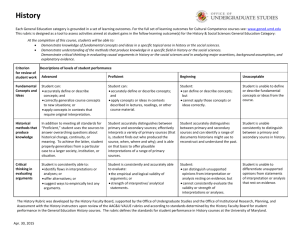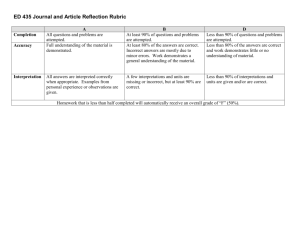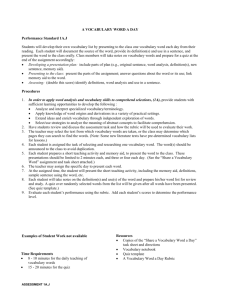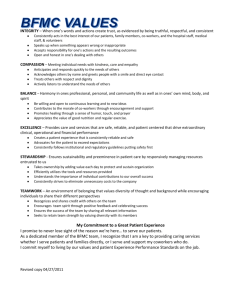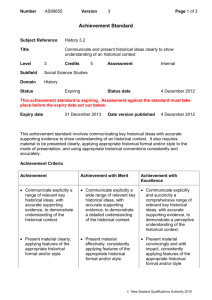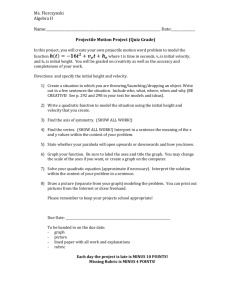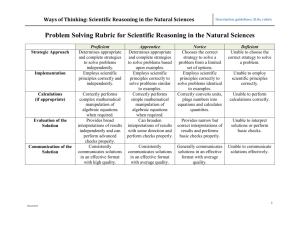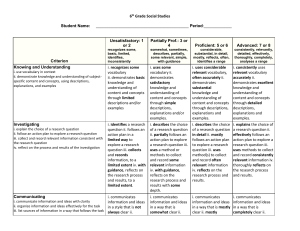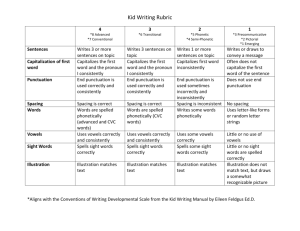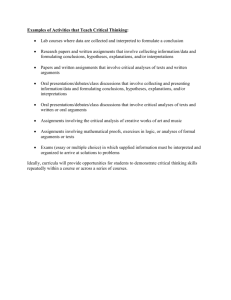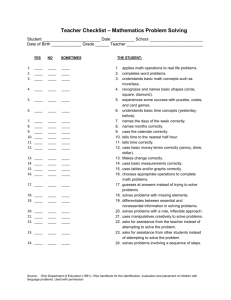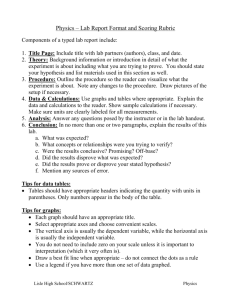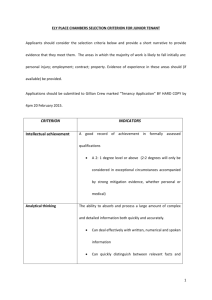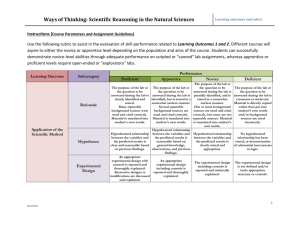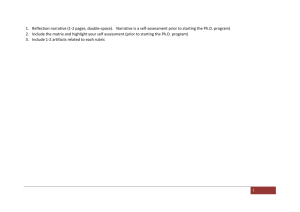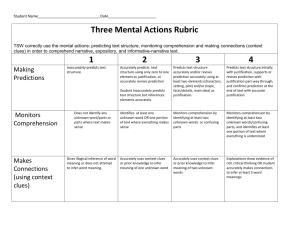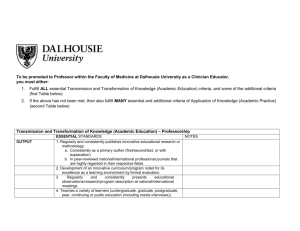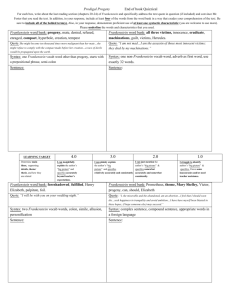Social Sciences
advertisement
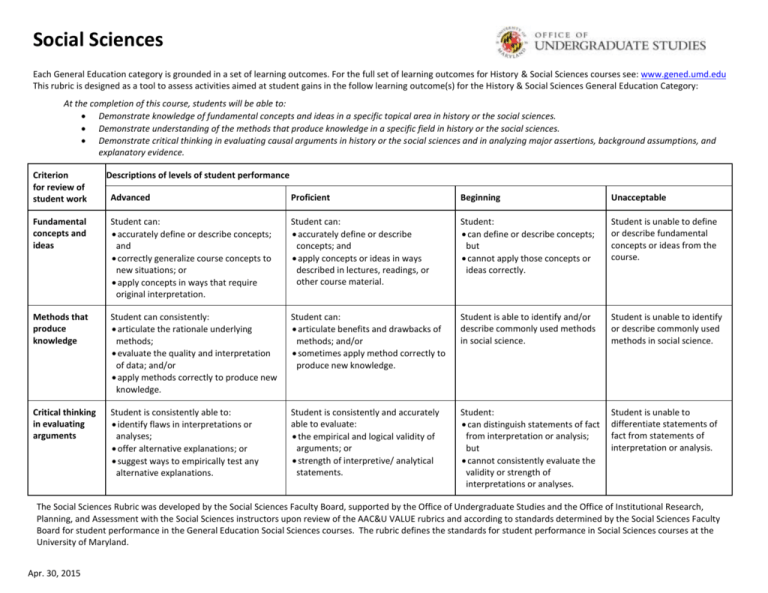
Social Sciences Each General Education category is grounded in a set of learning outcomes. For the full set of learning outcomes for History & Social Sciences courses see: www.gened.umd.edu This rubric is designed as a tool to assess activities aimed at student gains in the follow learning outcome(s) for the History & Social Sciences General Education Category: At the completion of this course, students will be able to: Demonstrate knowledge of fundamental concepts and ideas in a specific topical area in history or the social sciences. Demonstrate understanding of the methods that produce knowledge in a specific field in history or the social sciences. Demonstrate critical thinking in evaluating causal arguments in history or the social sciences and in analyzing major assertions, background assumptions, and explanatory evidence. Criterion for review of student work Descriptions of levels of student performance Advanced Proficient Beginning Unacceptable Fundamental concepts and ideas Student can: accurately define or describe concepts; and correctly generalize course concepts to new situations; or apply concepts in ways that require original interpretation. Student can: accurately define or describe concepts; and apply concepts or ideas in ways described in lectures, readings, or other course material. Student: can define or describe concepts; but cannot apply those concepts or ideas correctly. Student is unable to define or describe fundamental concepts or ideas from the course. Methods that produce knowledge Student can consistently: articulate the rationale underlying methods; evaluate the quality and interpretation of data; and/or apply methods correctly to produce new knowledge. Student can: articulate benefits and drawbacks of methods; and/or sometimes apply method correctly to produce new knowledge. Student is able to identify and/or describe commonly used methods in social science. Student is unable to identify or describe commonly used methods in social science. Critical thinking in evaluating arguments Student is consistently able to: identify flaws in interpretations or analyses; offer alternative explanations; or suggest ways to empirically test any alternative explanations. Student is consistently and accurately able to evaluate: the empirical and logical validity of arguments; or strength of interpretive/ analytical statements. Student: can distinguish statements of fact from interpretation or analysis; but cannot consistently evaluate the validity or strength of interpretations or analyses. Student is unable to differentiate statements of fact from statements of interpretation or analysis. The Social Sciences Rubric was developed by the Social Sciences Faculty Board, supported by the Office of Undergraduate Studies and the Office of Institutional Research, Planning, and Assessment with the Social Sciences instructors upon review of the AAC&U VALUE rubrics and according to standards determined by the Social Sciences Faculty Board for student performance in the General Education Social Sciences courses. The rubric defines the standards for student performance in Social Sciences courses at the University of Maryland. Apr. 30, 2015
